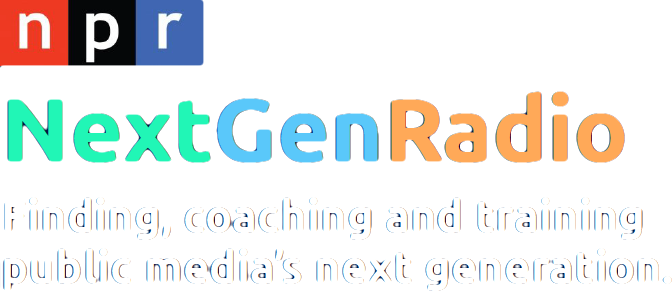
What does it mean to be an American?
We are finding, coaching and training public media’s next generation. This #nprnextgenradio project is created in Texas, where six talented reporters are participating in a week-long state-of-the-art training program.
In this project we are speaking to people representing a diversity of experiences and backgrounds in gender identity, physical ability, whether they are Indigenous, native born, a refugee or an immigrant without legal status—to ask what it means to be an “American.”
In recent years, West Dallas has gone through a lot of changes – oftentimes at the expense of Black and brown folks. Shardae White shares the story of Raul Reyes Jr., who is leading the fight to make sure new development benefits the entire community.
Illustration by Natalia Polanco
As West Dallas grows, a longtime resident empowers his neighbors to have the loudest voice
Raul Reyes Jr. lives on the other side of the “bridge to nowhere.”
He remembers critics nicknaming the bridge crossing the Trinity River during its planning phase. The idea was to connect downtown with a potential economic epicenter in West Dallas.
Except it isn’t nowhere. For Reyes and about 29,000 other residents, West Dallas is home. Neighborhoods like La Bajada, Los Altos, Ledbetter and Westmoreland Heights raised generations of people long before the Margaret Hunt Hill bridge became a reality.
“Everybody comes to the hood to tell us what to do,” Reyes says. “That’s why there’s so much resentment out here.”
A longtime resident empowers his neighbors to have the loudest voice
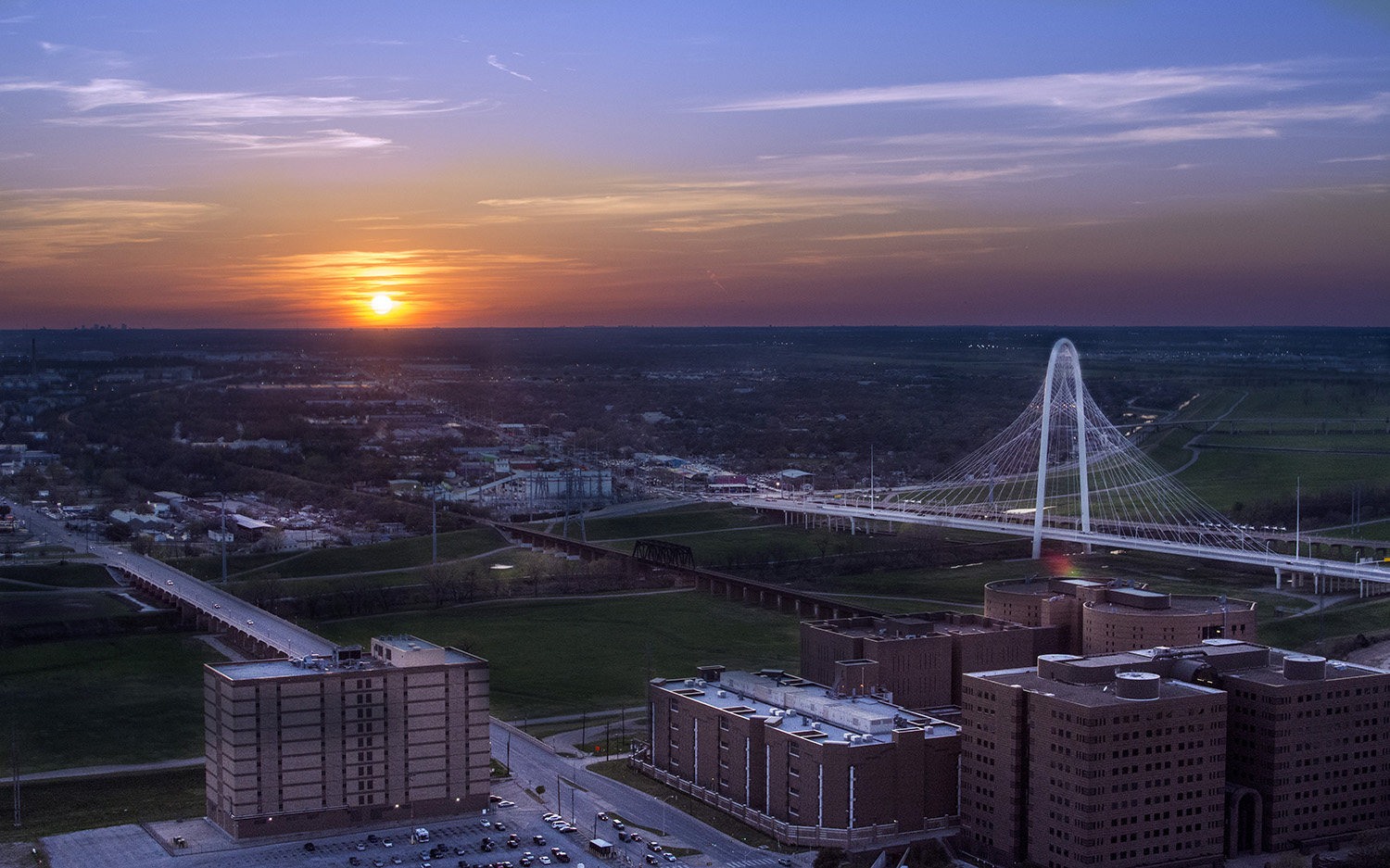
The Margaret Hunt Hill bridge made access to West Dallas easier, bringing rapid change to the historically disenfranchised area. (Photo by Robert Hensley/Flickr)
Like many in historically disenfranchised neighborhoods tapped for development, Reyes has seen the area change right before his eyes. In the decade since the bridge went up, investors have poured into West Dallas, seeing the potential to draw a thriving middle class. The development has introduced hip restaurants, nightlife and green spaces, but longtime residents – most of whom are Black and brown – feel they have been overlooked in the plan for growth.
Reyes lives in the same wood-framed house he grew up in in Los Altos. There he played football and dodged cars as a kid. Today, he waves to the paletero as he passes by.
“I got a tab with him,” Reyes jokes, gesturing to a paleta or popsicle stick he cleaned only moments before.
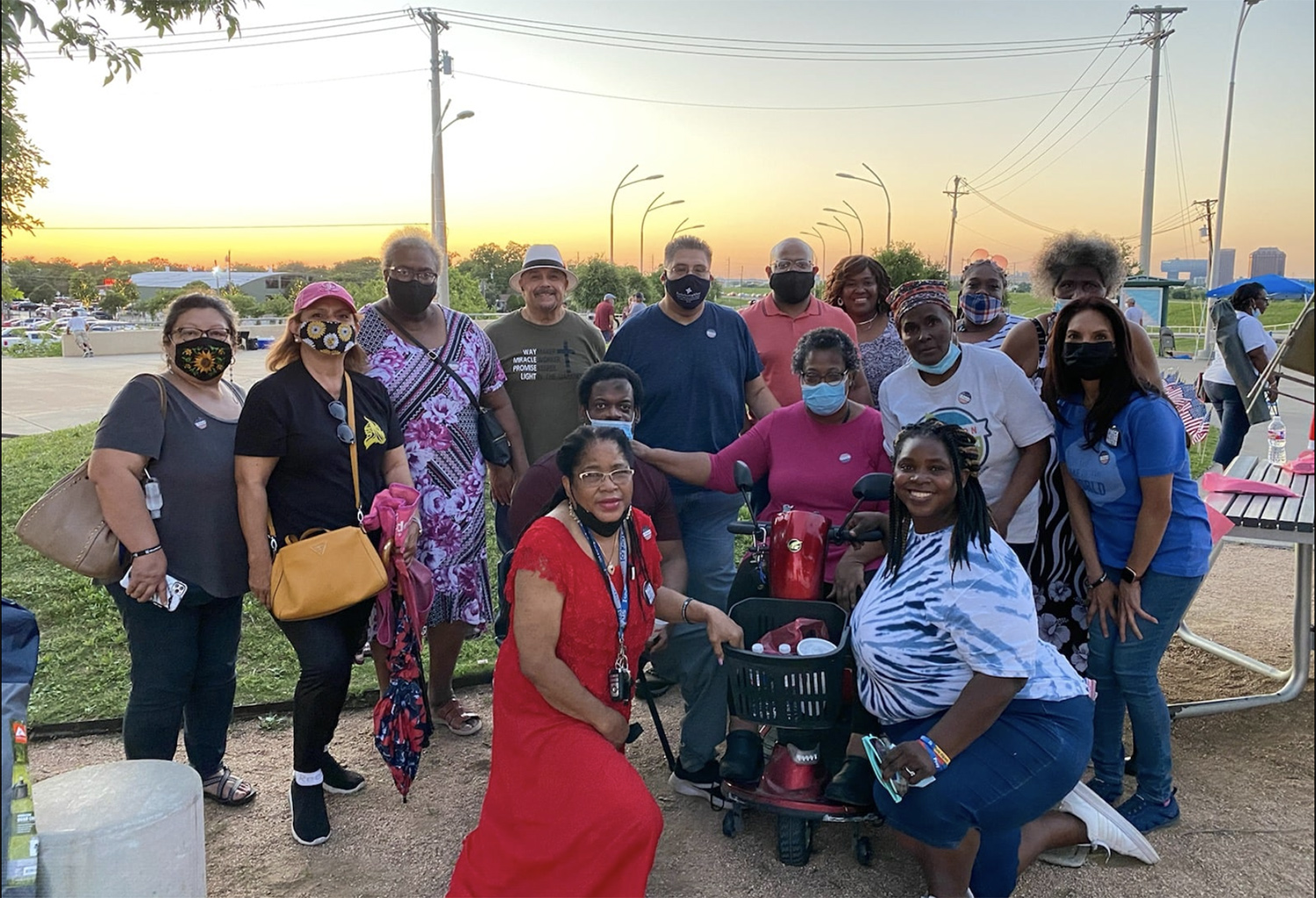
The founding members of West Dallas 1 gather for the National Day of Prayer in May. (Photo courtesy of Raul Reyes Jr.)
The 47-year-old father of three is chair of the Los Altos Neighborhood Association. He also advocates for his community as president of West Dallas 1.
The coalition works to ensure neighborhoods are safe, equitable and provide residents with opportunity. It recently had success closing down a concrete plant operating illegally in the neighborhood.
Reyes says the win energizes the group in its fight over other issues like removing an air-polluting shingles plant from residents’ backyards. It also wants to make sure a proposed 400-foot office tower at Trinity Groves will benefit existing members of the community.
“How many cubicles are my neighbors gonna have in there?” he asks, skeptical of claims that the office will bring jobs. “How many Fortune 500 companies hire people with high school diplomas?”
Reyes appreciates the role hard work plays in his community.
“One thing about the hood, you’re gonna learn how to hustle,” he says.
He remembers loading up his dad’s truck on weekends to sell produce, tortillas and tamales the neighborhood. Though his father worked as a porter in St. Paul Catholic Hospital, he knew he had to earn more to provide and leave a legacy for future generations.
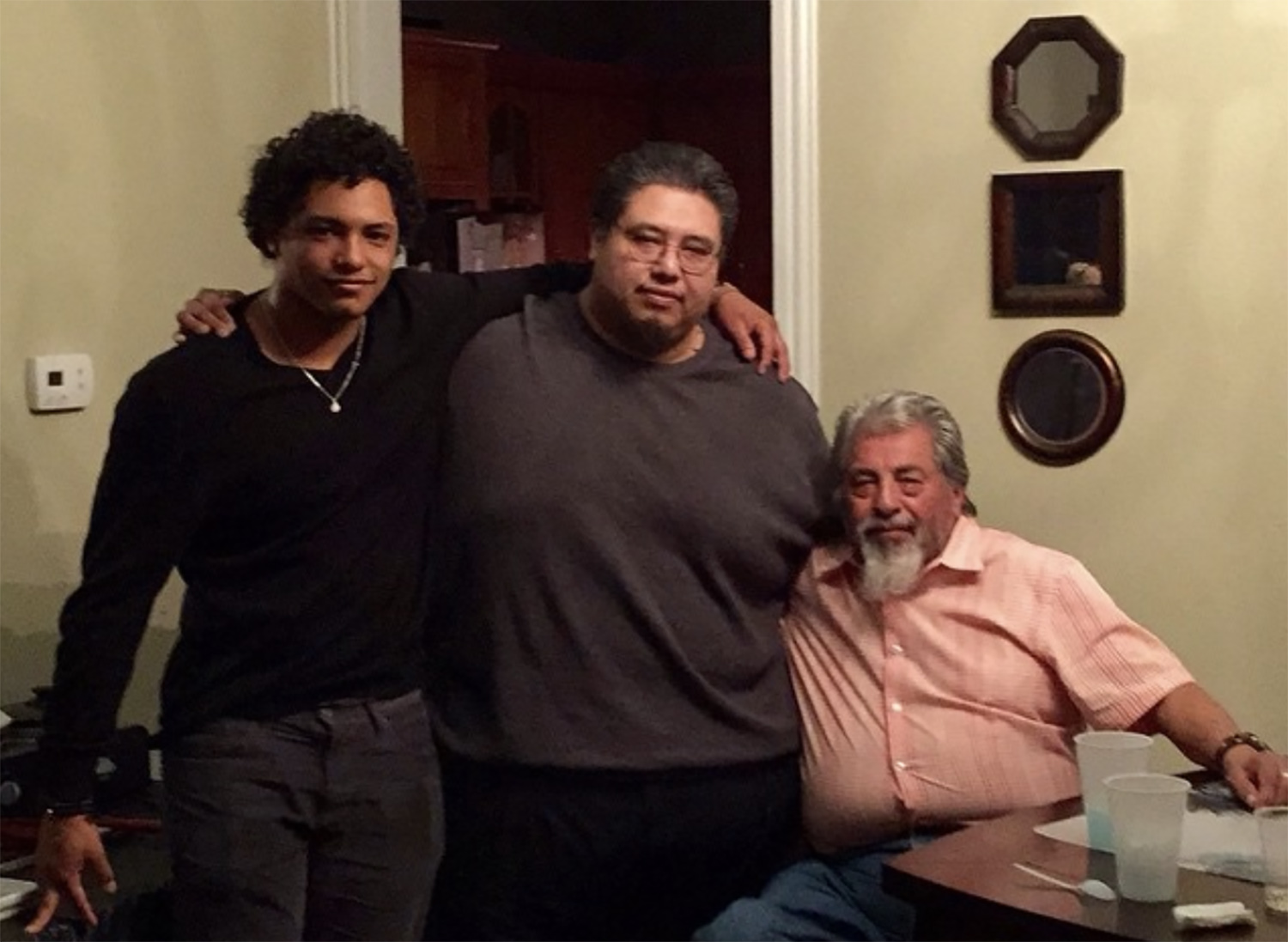
Three generations in Los Altos: Raul Reyes I, II and III celebrate the eldest’s birthday and ring in the new year together. They share a name, but each man has a unique relationship with his neighborhood. (Photo courtesy of Raul Reyes Jr.)
“He got out there and did all he needed to do,” Reyes says.
Equally important to him is the role of a quality education, and he’s committed to making sure it is encouraged. He leads West Dallas 1’s education equity committee, working to secure the higher earning potential for his neighbors and the opportunity that comes with it.
His optimism for future generations doesn’t dull the ache he feels as someone who deals with systemic oppression. As a child of Mexican immigrants and father to Black biracial children, he’s experienced inequity that even education doesn’t fix. He thinks of his son who received full athletic and academic scholarships to Southern Methodist University and now attends law school in Florida. Since George Floyd’s murder and the racial reckoning of 2020, Reyes worries about him even more.
“My son’s done everything right. Everything,” Reyes says. “Yet, I gotta text him every hour [asking], ‘Hey, man, you good?’”
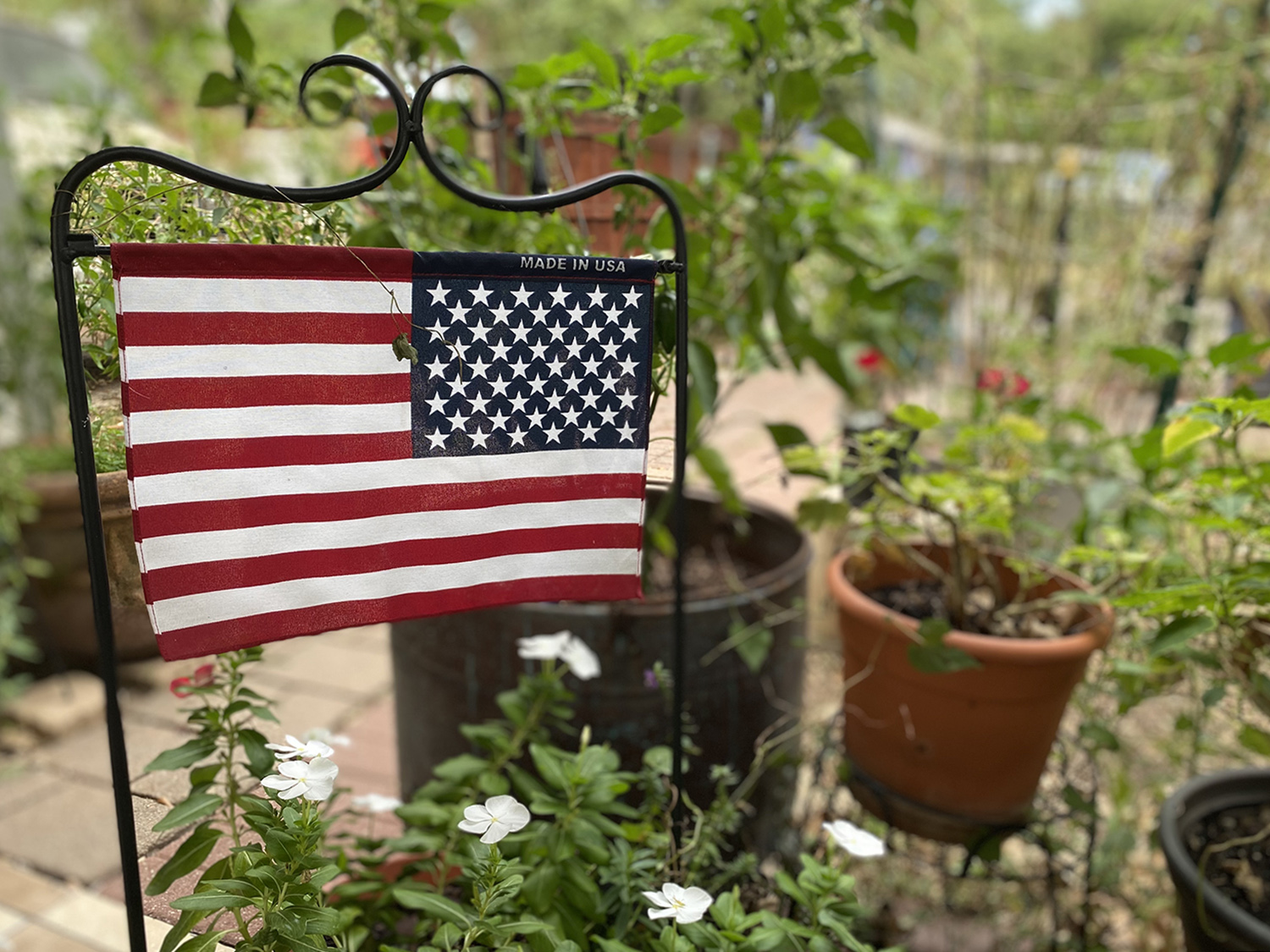
Reyes’ family has two small American flags in their front yard. He grapples with his American identity sometimes, saying the country isn’t fair to all its children. (Photo by Stella M. Chávez)
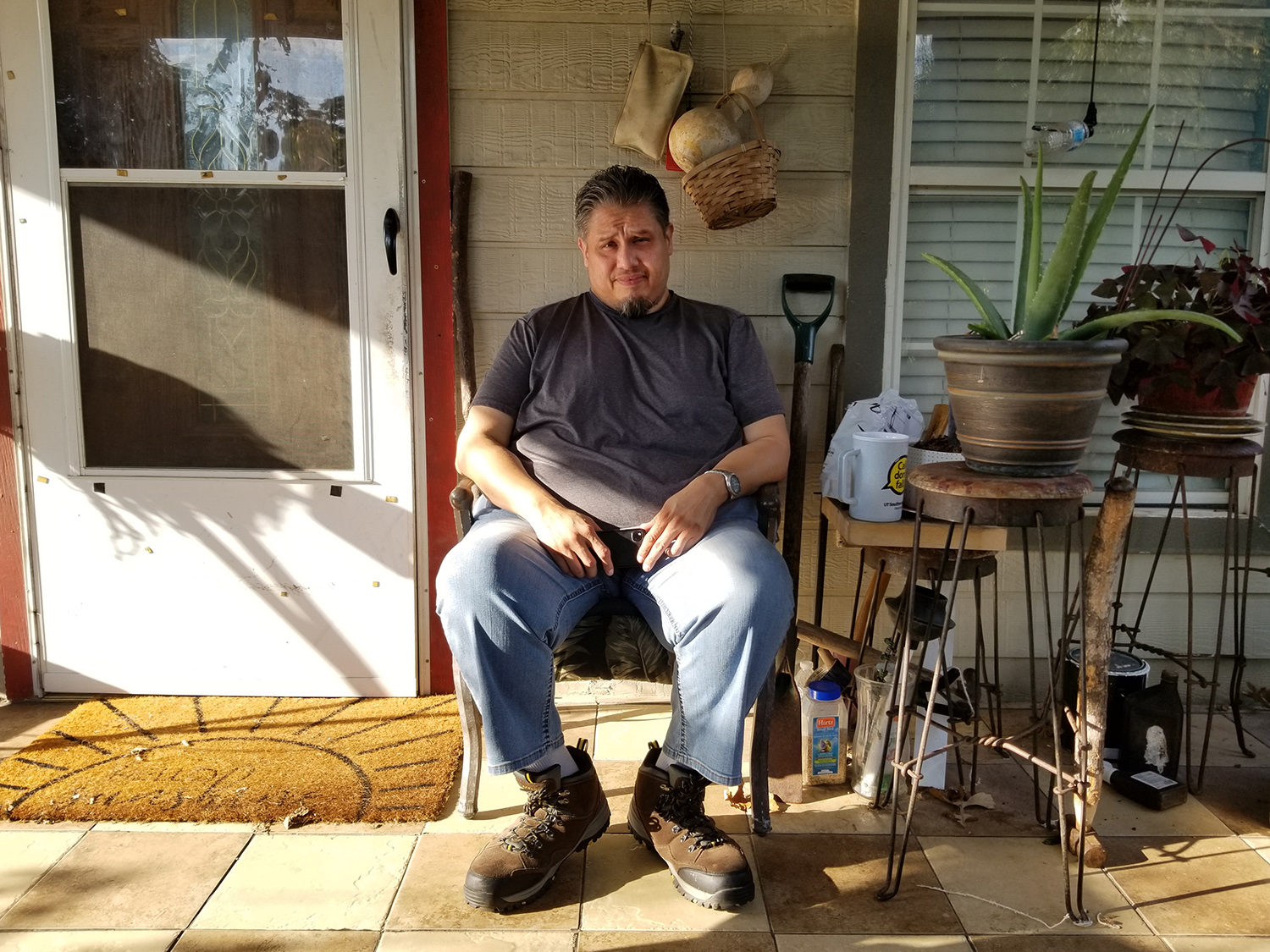
Raul Reyes sits on his front porch, greeting neighbors as they pass on a hot Texas afternoon. (Photo by Shardae White)
Reyes laments the fact that his family and neighbors still have to fight for opportunities people on the opposite side of the bridge are automatically afforded.
“Yeah, I’m proud to be an American,” he says with reserve. “It comes with a whole lot of hurt, though. That’s just the truth.”
That pain doesn’t deter Reyes in his mission. If anything, it fuels his fight for the hood that raised him and will inherit his legacy.
“The neighborhood has always been good to us,” he says. “We gotta pay it back.”
He looks out past the gate onto the street where he once played football and dodged cars.
“That’s why I’m here. I ain’t going nowhere.”
